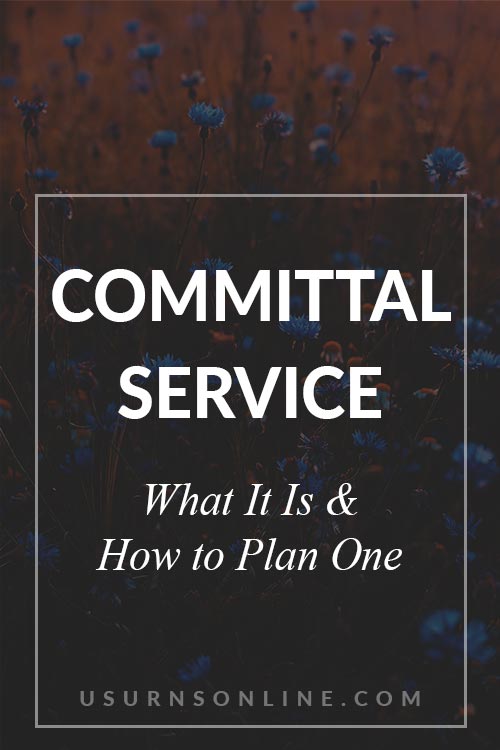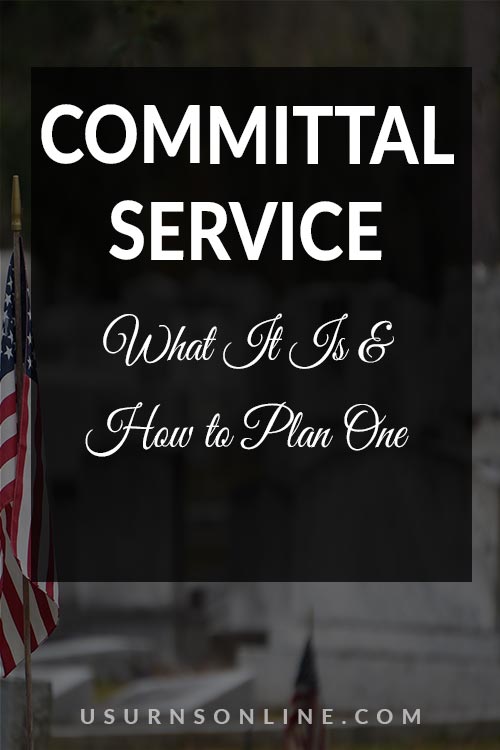What is a committal service? How is it different from a regular funeral? What do you do if you are attending one?
Whether you’re arranging or attending a committal, you’ll want to know what it is, what to say, and what to expect.
Here’s what you need to know.
What Is a Committal Service?
A committal service is simply a graveside service. “Committal” is a fancier way to say it. This is a brief memorial service at the time you commit the body to the ground.
The origin of the phrase is from the burial liturgy in the Book of Common Prayer, which has the famous lines, “We therefore commit this body to the ground, earth to earth, ashes to ashes, dust to dust; in sure and certain hope of the Resurrection to eternal life.”
This will be the final good-bye for the family and should be treated with dignity and respect.
When Is a Committal Service Held?
Many families choose to have a committal immediately following a funeral service. You can also choose to have a committal with no separate funeral or memorial at all.
I have attended a few committal services that are held directly before the funeral service. Some graveside services are private, and no one is informed until after it is finished. These details are up to the family.
A committal service is a brief ritual, usually no longer than 15 to 20 minutes. You can have a committal with a full casket burial or an urn interment.
Committal Service for Cremation Ashes
What about a graveside service for cremated ashes? Many families choose to have the cremated remains buried or interred in a columbarium niche. What does a committal look like when there is a cremation urn instead of a casket?
Urns Made in the USA
A committal service for cremated remains would be planned the same as for a full casket, with only the set up at the cemetery being a little different. The urn will be set on a table or an urn bier. Flower arrangements are made to place around the urn. The family might place pictures or memorabilia around the urn too.
Of course, the grave is much smaller and there is no lowering device. The rest of the service is the same as a full burial.
What to Expect at a Committal Service
- Everyone arrives at the cemetery. This might be in a procession or a designated time at the grave.
- Chairs (6-12) are set up for the immediate family.
- Prayers are said, and Scriptures are read. This is a very brief service. Once the prayers and Scripture have been recited, this part of the service is over.
- Friends or family can offer a few words.
- Attendees can walk by the casket to pay their final respects.
- The casket will be slowly and respectfully lowered. The next of kin will throw a handful of dirt in the grave. The funeral director will hold a bucket of earth, and everyone else will come forward and throw in a handful of dirt.
- Once this portion of the service has taken place, the congregants will offer their condolences to the family. Everyone will leave the cemetery afterward, often to a reception.
Committal Service Etiquette
Graveside service etiquette is very close to funeral service etiquette. The same principles apply.
You should dress nicely, if not modestly. Use the best judgment in your clothing choices. There have been times I have seen families request certain attire. An example would be if the deceased were a Bears fan, everyone would dress in Bears gear.
For more information, read our guide on What to Wear to a Funeral.
When chairs are set up, they are for the immediate family to sit in. Please don’t sit in one uninvited. It is acceptable for a family member to give their chair to anyone else, but only at their discretion.
If a tent or awning is set up, always allow the family coverage before anyone else. In my opinion, the only people that should get special treatment when it comes to chairs or the tent would be the elderly or very young.
When the service is complete, typically the friends and family form a line to pay their respects to the family. It is also appropriate to thank the officiant.
The family will routinely host a meal after the committal service. Usually, the funeral director will announce the plans and the address. All attendees do not need to show up for the meal. It is a common courtesy to let the family know if you will or will not attend.
How to Plan a Committal
Let your funeral director know the type of service you want. The funeral director will take care of most of the plans.
Read on to find out the steps you will need to take.
1. Choose a cemetery or burial site
Does a local cemetery already contain family members? If so, call the office and inquire about buying a plot in that section. It is also a good idea to check local cemeteries to see if your loved one purchased a grave at some point.
If not, you will need to decide on a cemetery and buy a plot. You could check with cemetery offices to see if someone is trying to sell a plot. You should be able to purchase it for less from an individual.
If you need to find a grave to see where a loved one is buried, try the website Find a Grave. For helpful guidance on choosing the burial site, go through these 13 Questions to Ask When Choosing a Cemetery.
2. Talk to the cemetery sexton
The sexton or caretaker runs the cemetery and knows its day to day operations. He will handle all the necessary details for the ceremony.
The caretaker will have the grave dug (the phrase they use is “opened”), and he will also have it filled (also called “closed”). He will make sure the casket gets to the grave and set on the lowering device. He will have the ground around the site is set up for mourners. Setting up the tents and chairs are his responsibility. You will need to pay the cemetery for these services.
If you would like any décor, such as flowers or a photo memorial board set up, you will need to bring these yourself, or speak with the funeral director to arrange it.
3. Find an officiant & plan the service
Your loved one’s pastor/minister/priest is usually chosen to lead the service. You will need to talk with the officiant, so he/she knows what Scriptures you want to have read. The officiant will also want some information so that he can write a short eulogy.
You can have singing at the committal service, and the officiant will guide you through some musical choices. Here are some excellent Christian funeral hymns to sing, and here are some traditional funeral songs (many, but not all are old Gospel tunes or folk songs).
If there isn’t a church affiliation, you can ask a family member to lead the service. Or you can also ask the funeral director to say some words.
You may not want to have a formal service, and that is ok. If this is your wish, you can have friends and family step up and speak for a minute. You don’t want too many people speaking for longer than a couple of minutes each. This is a short service.
4. Other considerations
Weather can play a big part in a committal service. Rain, heat, wind, snow, and cold can be deterrents to having this type of service. It is a good idea to keep this in mind when you are making plans.
It would be best if you let the funeral director know what you want. The funeral director has performed these tasks countless times and is there to help you. Funeral directors have a set order and know what has to be taken care of. Ask for their advice.
Trust me, being a funeral director; I know that funeral directors want your service to be perfect for you. We are very empathetic, compassionate and work with grieving families every day. We are here to guide you through this difficult time and try to make it as smooth as possible.
More Resources
- How to Choose a (Great) Funeral Home
- 7 Things You Probably Didn’t Know About Funeral Directors
- How to Bury a Cremation Urn
- Funeral Ceremony Ideas & Options
- What to Say When Someone Dies
Pin It





